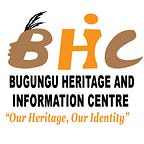The demarcation of Murchison Falls National park: How Bagungu reacted to it
Murchison Falls National park (MFNP) is one of the game parks in Uganda which comprises an area of 3,860 square kilometers. The park is roughly bisected by the Victoria Nile. MFNP was gazetted as a national park in 1952, soon after Uganda’s National Parks Act. The Southern part of river Nile in thepark covers what was Bagungu’s areas of residence before the sleeping sickness outbreak of 1898–1920 which also led to evacuation of Bagungu in 1909.
Bagungu lost their large chucks of land to this park after the proposal covered most of their farmland in early 1950s. Bagungu did not welcome the idea of a national park mainly because it was going to affect their hunting expeditions which were part and partial of their livelihood. There were very many meetings held by the Provincial Commissioner (PC) and the District Commissioner (DC) to convince Bagungu to accept the game park but Bagungu maintained their resistance and continued to go poaching (after demarcating their land, they were no longer called hunters but poachers).
The Katikiro (prime minister) of Bunyoro Kitara Kingdom, Nyakatura called for a meeting (colonial government forced him to do so) in 1954 and it is said that, during this meeting, the prime minister described Bagungu as greedy for continuing to hunt hippopotamus despite the fact, they had cattle, goats and fish. Calling them greedy annoyed them so much and they wondered what to do to avenge and they settled for excess poaching whereby they reacted by killing more hippopotamus. The tourists at a tourist camp called Sex 4 in the park were alarmed by the floating carcass of the hippopotamus on the waters on River Nile. The colonial government was so much annoyed and wondered whether the prime minister had told Bagungu to scale up their resistance.
In 1954, the colonial government sent a letter to the county chief ordering him to call for a meeting of Bagungu elder and the omukama of Bunyoro Kitara kingdom, Sir Tito Winyi and the meeting was held at Ndadamire. The Omukama was welcomed very well by the Bagungu elders (he remains the darling of Bagungu in their entire history of being under Bunyoro Kingdom). During the meeting, the king is said to have asked Bagungu ‘do you want another evacuation?’ and Bagungu elders replied in negative. Then he told them ‘then why do you send your children to go poaching?’ the elders reacted by telling him that they were going to remove all the dugouts (ngooto) from the territories of the park which they did the following day after the meeting.
During this meeting, the following men decided that they would row all the dugouts from the park; Hwenda Mukindwa, Kakura Musunga, Gwansa Mulokoli, Massa Mukindwa and Jacula Mukidwa.
Today, the national park gives funds to Buliisa District Local Government under the programme they term as revenue sharing, and this money has been used to support community initiatives such as livelihood programmes like goat rearing and bee keeping and at the Sub-County levels, there has been construction of classroom blocks and health centres. However, the human-wildlife conflict has persisted in form of communities going to hunt in the park, wild game destroying the crops and, to the extreme, animals killing people and the National Park Act does not provide for compensation of the victims.
I call upon the members of the Parliament of Uganda to sped up the processing of passing the Uganda Wildlife Bill, 2017 in to the law to help correct the injustice.
Kiiza Wilson
Executive Director, Bugungu Heritage and Information Centre.
Email: bugunguheritage@gmail.com
